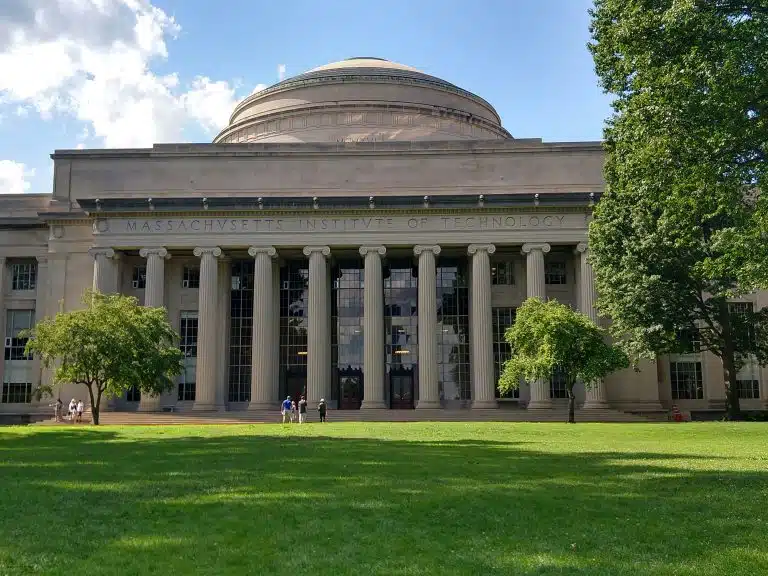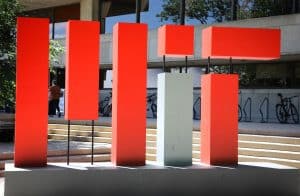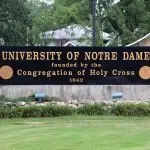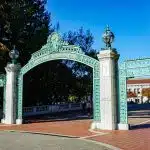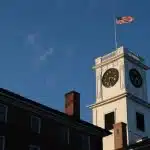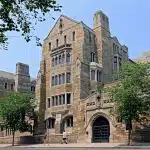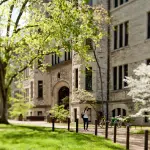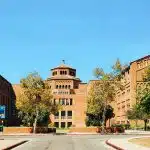The Massachusetts Institute of Technology (MIT) is one of the world’s most prestigious universities. It recently claimed the #1 spot in the latest QS World University Rankings and has an acceptance rate of just 4.5%. But beyond the prestige, what really goes on inside those futuristic buildings? Whether you want to apply someday or are just curious, here are fun facts about MIT that might surprise you and make you want to become a future Beaver.
Top 10 Fun Facts about MIT
Located in Cambridge, Massachusetts, MIT is one of the Ivy Plus schools, which are institutions that offer Ivy-level of academic excellence and competitive admissions. If you’re curious about the traditions and quirks that make the school special, here are 10 fun facts about MIT that might surprise you:
1. Decisions drop on Pi Day, of course.
At most colleges, admissions decisions come out on a random weekday with little fanfare. However, at MIT, even that moment reflects the school’s personality. Admissions decisions are typically released on March 14, also known as Pi Day, in honor of the famous mathematical constant (3.14). It’s a small detail, but it perfectly matches MIT’s love of math, precision, and tradition.
To take it further, decisions often go live at 6:28 pm Eastern time. That’s known as “Tau Time” since tau equals two times pi. In 2015, MIT took it to the next level. On March 14, 2015 (3.1415), decisions were released at exactly 9:26 am to continue the sequence of digits. Only at MIT would the admissions timeline be calculated down to the decimal!
MIT Admissions also creates a video each year to celebrate the moment. These short, creative videos are posted on the MIT Admissions blog and are just another example of how the school turns a stressful day into something fun and memorable.
2. The school mascot is a beaver, nature’s engineer.
Tim the Beaver has been MIT’s mascot since 1914, and his origin story is pretty unique. He was chosen by the Technology Club of New York, which presented two real, mounted beavers to the university president during a formal dinner.
Other animals were considered, including the kangaroo and the elephant, but the beaver won for being smart, hardworking, and creative—exactly the traits MIT values. If you’re someone who loves solving problems quietly and efficiently, you might have a little Tim in you, too!
One alum called the beaver “an industrious American animal noted for its mechanical skills who does its best work after dark.” That pretty much sums it up. Like MIT students, beavers build, design, and solve problems in their environment. Tim may not be as flashy as other mascots, but he’s a perfect fit for a school full of quiet inventors and relentless tinkerers.
3. MIT’s colors are gray and red, symbolizing metal turning into steel.
You’ve probably seen school colors before, but even the colors have a backstory at MIT. MIT’s official colors, cardinal red and silver gray, were chosen in 1876 by the School Color Committee. The goal was to pick colors that reflected both school pride and character.
Cardinal red reminded them of the American flag and its bold, inspiring spirit. Gray stood for quiet strength, modesty, and persistence. Together, the two colors symbolize transformation and progress, like turning raw material into something stronger, like iron becoming steel. It’s a perfect match for a school focused on building and innovation.
Today, you’ll see red and gray all over campus, especially during big events. One of the most visible displays comes from the Cardinal and Gray Society, made up of alums celebrating their 50th reunion. They lead the graduation processional, wearing bright red jackets and gray slacks or skirts, symbolizing the values MIT has held onto for generations.
4. You can actually earn a Pirate Certificate here.
Most students graduate college with a degree. At MIT, you could walk away with a Pirate Certificate, too!
Yup, you read that right. Once you complete four physical education classes, namely archery, fencing, pistol (or rifle), and sailing, you can earn an official Pirate Certificate from the Department of Athletics, Physical Education, and Recreation. The license existed informally for about 20 years but only became official in 2012.
There’s even talk of a secret oath sworn by new pirates, though no one really knows what it is. If you’ve ever dreamed of being both a scientist and a swashbuckler, this tradition is for you. It’s just another example of how MIT mixes serious achievement with a sense of humor.
5. The Brass Rat is MIT’s famous and flashy class ring.
Here, getting your class ring is a big deal. Designed by a committee of sophomores, the ring known as “the Brass Rat” is revealed each spring during a special ceremony.
It’s made of gold and features the MIT beaver on top, the MIT seal and dome, and skyline views of Boston and Cambridge. The nickname comes from its color and the beaver’s rat-like appearance.
Each graduating class adds its own details, often including symbols or inside jokes reflecting their time at the university. For many students, the Brass Rat isn’t just jewelry but a symbol of everything they worked for. Alums wear it with pride, and it’s instantly recognizable to anyone who knows MIT. Spot one in the wild, and you’ve probably found a fellow problem-solver!
6. MIT helped invent the world’s first computer.
It’s easy to take computers for granted now, but in the 1940s, they didn’t even exist—until MIT stepped in.
The first real-time digital computer, Whirlwind I, was developed in Cambridge as part of a Navy project led by MIT engineer Jay Forrester. What started as a flight simulator ended up changing everything. You can still see Whirlwind I today at the MIT Museum if you want to meet one of the original brains behind modern tech.
And it didn’t stop there! MIT has been at the heart of computer innovation ever since. The GNU Project, the MIT Media Lab, and the World Wide Web Consortium all started here. Even the guy who invented the web, Tim Berners-Lee, chose MIT as his home base. So, if you’re into computing, you’re walking the same halls as those who built the internet!
7. A cancer gene was first discovered at MIT.
Now, MIT isn’t just about technology. It’s also behind some of the biggest breakthroughs in medicine! In 1982, MIT scientist Robert Weinberg discovered the first human oncogene, a gene that can turn normal cells into cancer. That moment completely changed how scientists understand, study, and fight cancer.
Weinberg’s team also discovered the first tumor suppressor gene and later showed how to turn healthy cells into tumor cells in a lab. Thanks to this research, the world got one step closer to understanding how cancer works and how to stop it.
8. MIT and Caltech have a legendary rivalry.
If you’re into science and engineering, you’ve probably heard of Caltech. MIT has a long-standing, friendly rivalry with Caltech, and while both are academic powerhouses, the competition goes beyond grades and research.
Over the years, students from both schools have pulled off some wildly creative pranks. In 2005, Caltech handed out MIT t-shirts that read “…because not everyone can go to Caltech” on the back. A year later, MIT responded by transporting Caltech’s 1.7-ton cannon all the way to Cambridge and proudly displaying it on campus. The rivalry is smart, playful, and still going strong!
9. Alums include astronauts, app founders, and Nobel winners.
If you’ve ever used Dropbox, listened to a Bose speaker, or read about the Moon landing, you’ve already crossed paths with MIT alumni. Grads from this school have gone on to start companies like Intel and Hewlett-Packard, lead global organizations like the United Nations, and create things that shape daily life.
And if space is more your thing, MIT has you covered there, too. More than one-third of U.S. crewed space flights have included MIT-trained astronauts. Four of the 12 people who walked on the Moon studied here, including Buzz Aldrin from Apollo 11. Whether you want to launch a startup or leave the planet, you’re in good company!
10. No Latin honors—just surviving MIT says enough.
While most colleges hand out titles like summa cum laude or valedictorian, MIT skips all of that. There’s no class ranking and no official academic honors at graduation. It’s simple: if you made it through MIT, that alone says everything anyone needs to know. The coursework is intense, the expectations are sky-high, and everyone here is already operating at an elite level.
Even fictional genius Tony Stark is said to have graduated from MIT “summa cum laude,” but in real life, that title doesn’t exist here. When you graduate, you leave with a degree that already speaks volumes.
MIT Traditions You Should Join
Now that you know some fun facts about MIT, here are a few campus traditions you’ll want to experience for yourself. These moments bring students together and make life on campus unforgettable.
1. MIThenge
The Infinite Corridor runs straight through the center of MIT’s campus, connecting buildings from one side to another. Twice a year, in November and January, the setting sun aligns perfectly with the hallway. From the west end of Building 8, sunlight floods through the third-floor windows and stretches across the corridor in a striking line of light.
This event, now known as “MIThenge,” was first discovered and calculated by architecture students in the 1970s. The sun hits the corridor at an azimuth of about 245.75 degrees, creating a natural light show that lasts only a few minutes. Students gather to watch it each year, making it one of MIT’s most quietly beautiful traditions.
2. MIT Mystery Hunt
Do you love puzzles? Then, this tradition is for you!
Every January, during MIT’s Independent Activities Period (IAP), students form teams to take on the Mystery Hunt. The goal is to solve a series of puzzles that eventually lead to a hidden coin somewhere on campus. The puzzles can be logical, visual, physical, or completely unexpected.
Started in 1981, the MIT Mystery Hunt is now one of the most challenging and well-known puzzle events in the world. It attracts up to 2,000 participants each year, including alums and puzzle enthusiasts from outside MIT.
The winning team earns the right to design the next hunt, creating their own puzzles and rules for the following year. It’s intense, creative, and a core part of MIT’s problem-solving spirit.
3. Prank culture, aka “hacking”
We already mentioned MIT’s rivalry with Caltech, but that’s just the start of the school’s prank history.
At MIT, pranks are called “hacks,” and they’re not just jokes. They’re clever, technical, and usually take a lot of planning and problem-solving to pull off. Hacks are part of campus culture, and while they’re not officially approved, they’re often admired for their creativity.
One of the most famous hacks happened in 1958, when students measured the Harvard Bridge using the body length of a fraternity pledge named Oliver Smoot. The result? The bridge is 364.4 smoots long, plus one ear. That measurement is still marked on the bridge today, and “smoot” is now a real unit in Google Earth.
Other legendary hacks include a black weather balloon that popped out of the field during a Harvard-Yale football game and, as mentioned earlier, the full-on relocation of Caltech’s 1.7-ton cannon to MIT’s campus. If you come here, don’t be surprised if something strange and brilliant pops up overnight. That’s just “hacking” in action!
Frequently Asked Questions
1. What are some interesting facts about MIT?
MIT has plenty of interesting facts that make it stand out from other schools. For example, they release admissions decisions on Pi Day, have a beaver as its mascot, and even allow you to earn a Pirate Certificate. It’s also where the first computer and human cancer gene were discovered.
2. What major is MIT best known for?
MIT is best known for engineering, especially electrical, mechanical, and computer science. It also has top-ranked physics, economics, architecture, and biology programs. If you’re into building, solving, or innovating, MIT likely has a major for you.
3. What are the pros and cons of attending MIT?
Like any school, MIT has its pros and cons. The pros include world-class professors, unmatched research opportunities, and a community that pushes you to grow. The downside is the heavy workload and fast-paced environment, which can sometimes be overwhelming. But if you thrive in a high-energy, challenge-driven environment, then MIT can be the right fit.
Takeaways
- Fun facts about MIT highlight its unique campus culture, from Pi Day admissions to pirate certificates and the school’s official mascot, Tim the Beaver.
- Campus traditions like MIThenge, the Mystery Hunt, and “hacking” add personality to the school’s intense academic culture.
- MIT students are known for being curious, driven, and creative problem-solvers who thrive in a challenge.
- With top programs in engineering, computer science, biology, and economics, it’s easy to see why MIT ranks among the best non-Ivy League schools.
- If MIT is your dream school, consider working with an admissions expert who can help you build a strong application and stand out in a competitive pool.

Eric Eng
About the author
Eric Eng, the Founder and CEO of AdmissionSight, graduated with a BA from Princeton University and has one of the highest track records in the industry of placing students into Ivy League schools and top 10 universities. He has been featured on the US News & World Report for his insights on college admissions.

